‘Widow cuisine’ of Bengal: Vegetarian delicacies born out of oppression
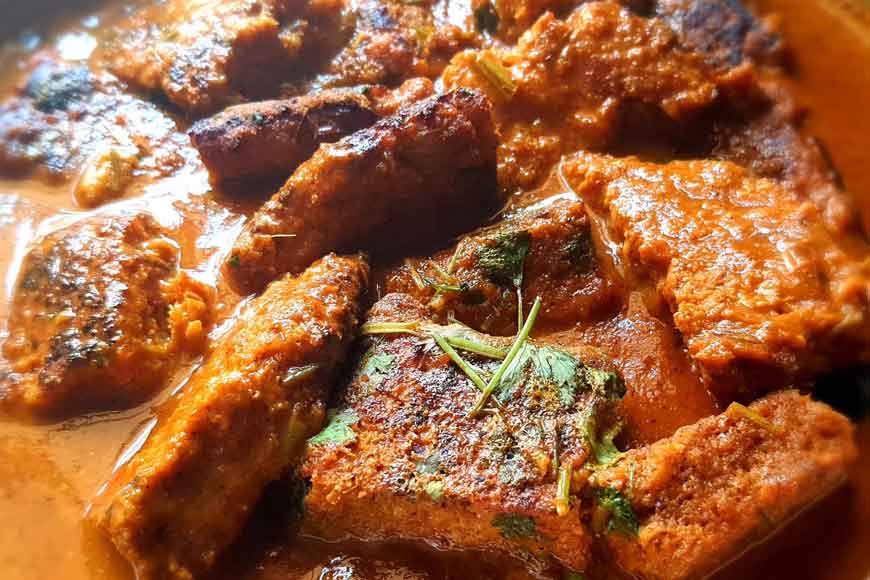
Dhokar Dalna
We are always known as fish-eating or meat-eating Bengalis. There is a general perception that Bengalis are strictly non-vegetarian and even the ‘bhog’ we offer some of our deities is non-vegetarian, a strict no-no in other parts of India. But what many are not aware of is that a major part of Bengali cuisine is dominated by exclusive vegetarian dishes, created as part of the ‘widow cuisine’ of Bengal.
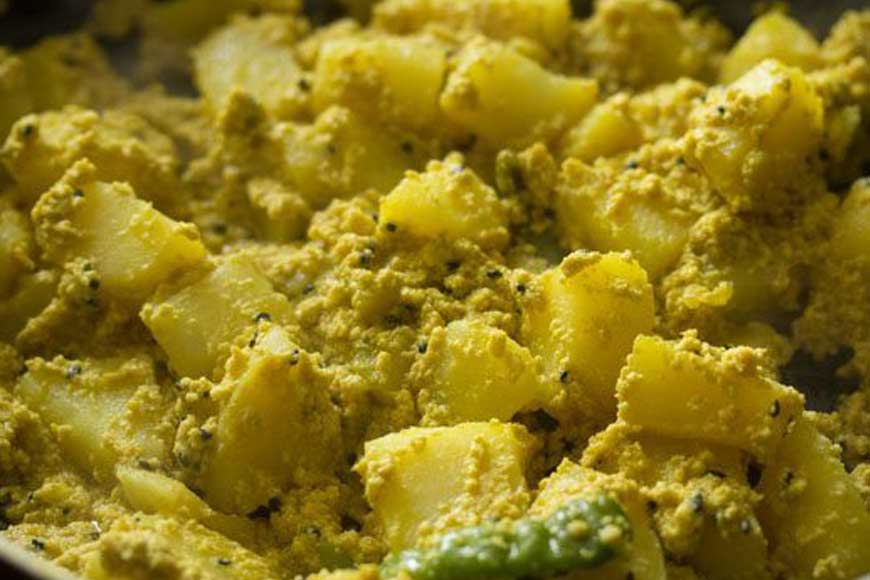 Alu Posto
Alu Posto
Widows in the early 18th and 19th centuries were strictly prohibited from eating non-vegetarian food and were forced to follow many customs which were nothing short of torture, from rigorous fasts to surviving on a meagre diet. But while the widows felt this alienation, they developed new dishes by experimenting with the vegetables that even today are a major part of the vegetarian cuisine of Bengal. They introduced items like poppy seeds (posto) to add to the taste of a simple meal of boiled potatoes, or came up with delicacies like Dhokar Dalna (a curry made of lentil paste shaped like dumplings). The meals were made from simple ingredients, but developed a unique flavour and taste.
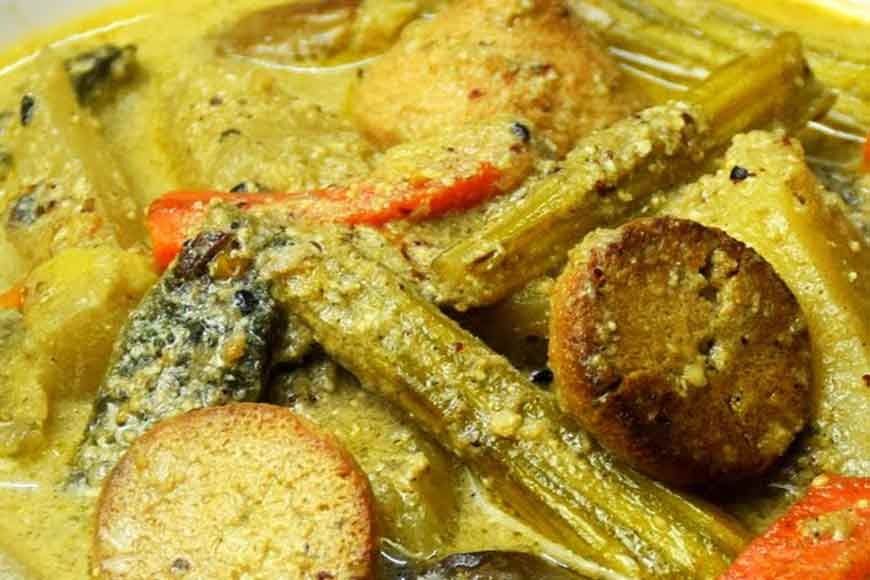 Sukto
Sukto
In the absence of elaborate meals that they had as married women, the widows had to ensure that their everyday diet was nutritious enough, so they brought in items like Shukto and Labra, delicately flavoured and garnished combinations of vegetables that have become staples for many a festival.
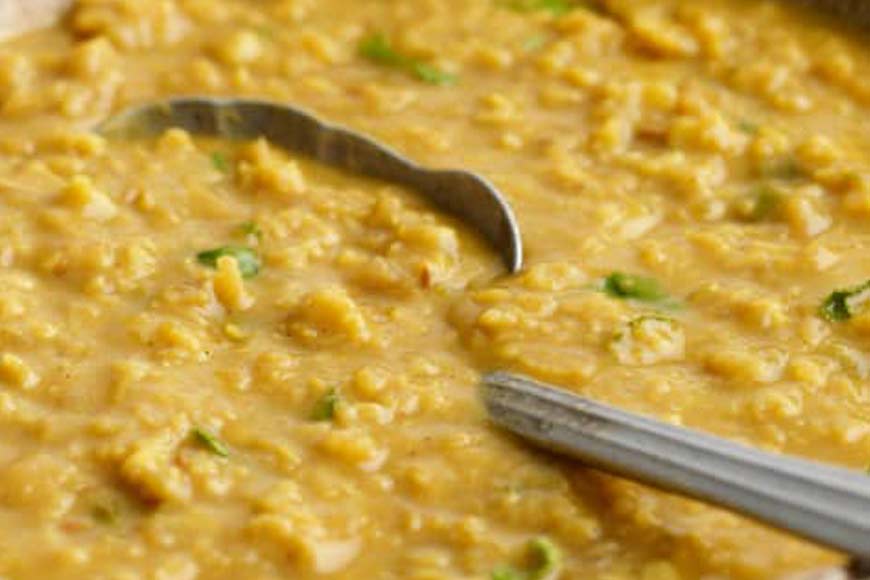 Dal
Dal
Dal (pulses) or vegetarian dishes have historically not been an essential part of Bengali meals. However, many of the widows were children, since child marriage was rampant, and young girls were married off to much older men who soon died, leaving the girls as widows. The strict social rules and regulation did not allow widows to consume onion, garlic or any sort of non-vegetarian food. Even masoor dal was prohibited. With so many dietary limitations, they had to make do with whatever was available around them.
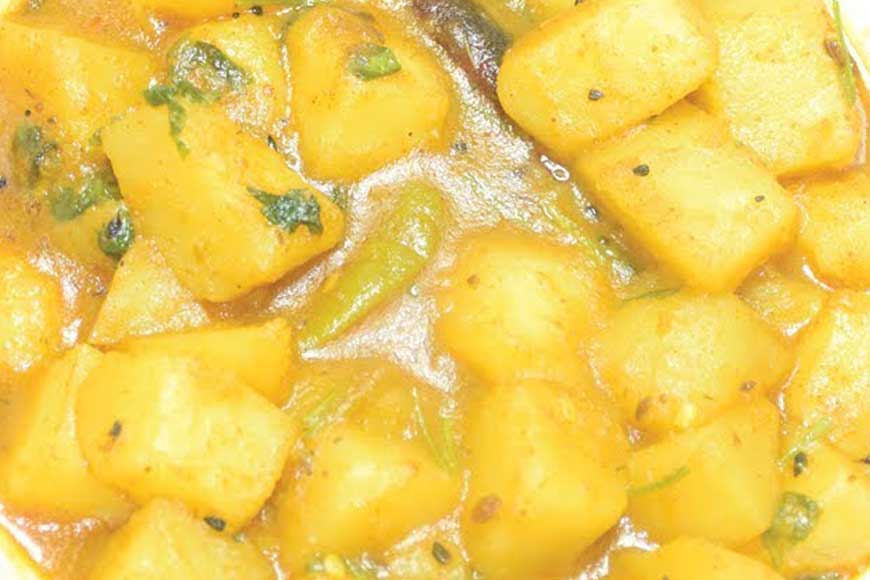 Alur Bati Chorchori
Alur Bati Chorchori
Most of the meals were wholesome and packed with nutrients, vegetables, fruits, different spices and seeds. Some of them were even one-pot meals like the Alur Bati Chorchori (potatoes cooked in salt, turmeric, green chillies and nigella seeds). It was eaten from the same pot in which it was cooked. Plenty of ‘bhaja’ or fried items were part of the meals, including Thor Bhaja (fried white stem of a banana plant cooked with poppy seeds, yellow mustard, salt, turmeric and mustard oil), best with hot steamed rice.
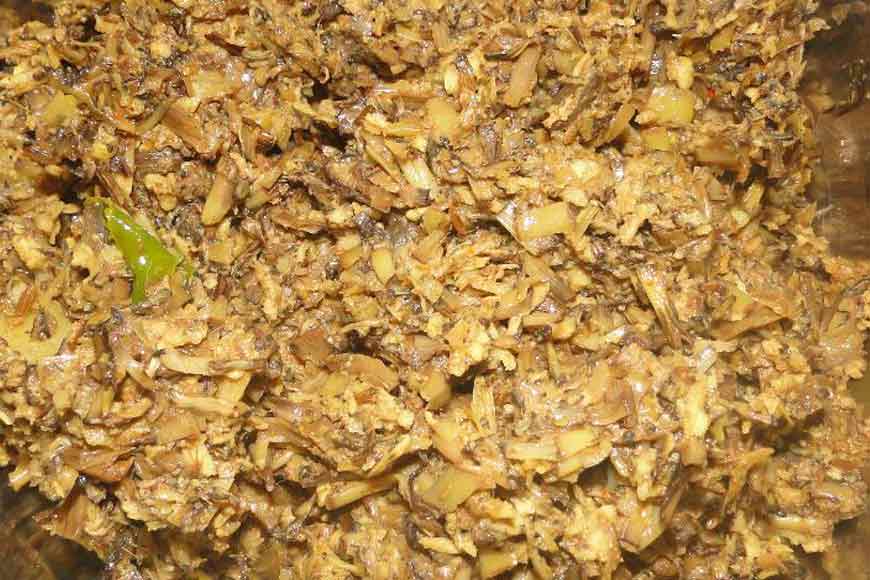 Mochar Ghonto
Mochar Ghonto
Other vegetarian delicacies were mochar ghonto (banana flower, potato, salt, turmeric, green chillies, sugar and grated coconut cooked in mustard oil) and Kanchkolar Kofta. This last was the widows’ answer to meat balls and is an amazing dish where balls are made of boiled unripe banana paste, boiled potatoes and a little all-purpose flour and then fried. These balls are then immersed in a gravy of grated coconut, salt, turmeric, sugar, green chillies and some vegetable oil.
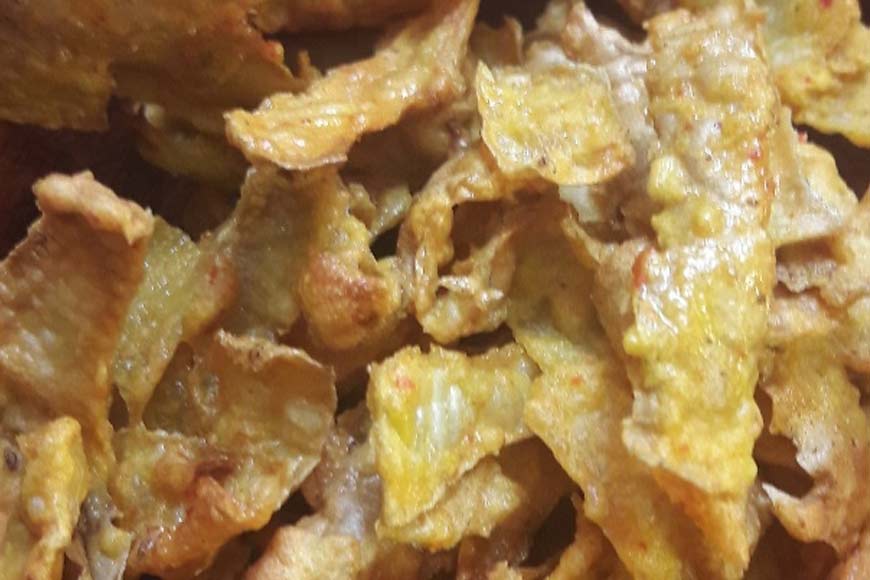 Alur Khosha Bhaja
Alur Khosha Bhaja
Since options were limited, the widows used every part of a vegetable, from stems to shoots, roots to seeds as part of the dishes. They even used leftover peels for dishes that Bengalis love even today, like alur/ lau er khosha bhaja (leftover potato or gourd peels fried with black cumin and red chillies). In order to introduce some ‘amish’ or non-vegetarian flavour into the dishes, they began conjuring recipes like Echorer Dalna (raw jackfruit curry that tastes a lot like mutton).
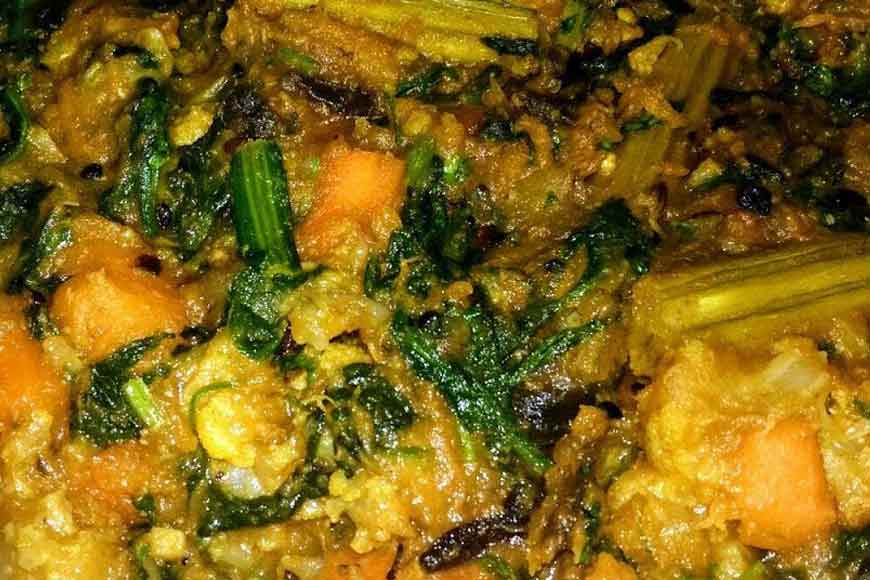 Labra
Labra
But the steal of the kitchen was the ‘Labra Torkari’, a dry curry with a mixture of different vegetables. This dish is still used as a ‘bhog’ along with khichuri and is a hot favourite with foodies of any age. It has a mixture of vegetables ranging from radish to potato, eggplant, sweet potato, taro, plantain and beans. A relative of Labra is Shukto, considered a gut-cleansing agent and hence eaten as a starter. Both Labra and Shukto have all kinds of vegetables, taking care of the nutritional deficiency that widows might have suffered in the absence of meat and fish protein. Bitter gourd is often added to the Shukto, which helps in better digestion.
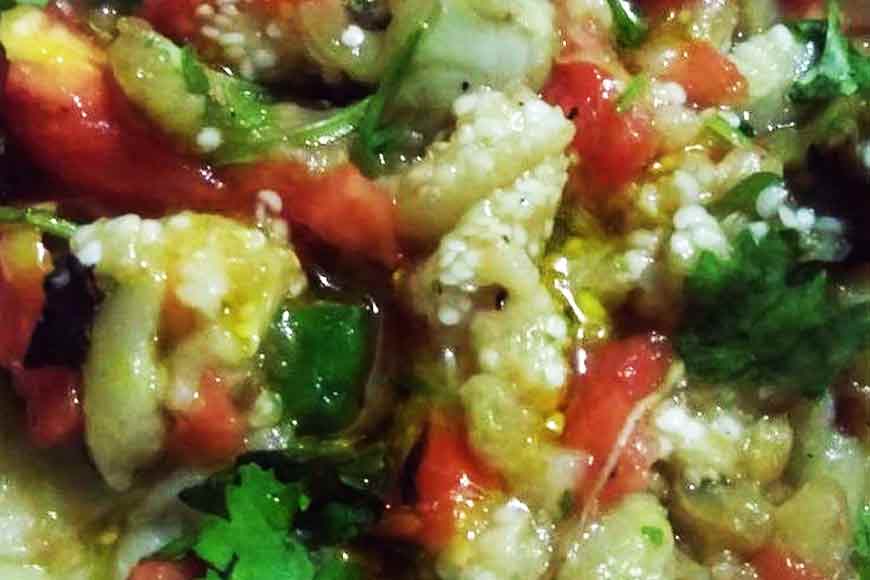 Begun Pora
Begun Pora
Then you have Begun Pora, made by roasting brinjal with potatoes and tomatoes. Once roasted, a paste is made out of all these vegetables with salt, mustard oil and green chillies.
A picture of ‘widow cuisine’ is found in books like A Taste Of Time: A Food History Of Calcutta or A Calcutta Cookbook: A Treasury Of Recipes From Pavement To Palace, where it is mentioned: “In a secluded corner of the cookhouse, a widowed relative sits over her own stove. She has added delicate nuances to the rich vegetarian cornucopia of Bangla ranna.”











